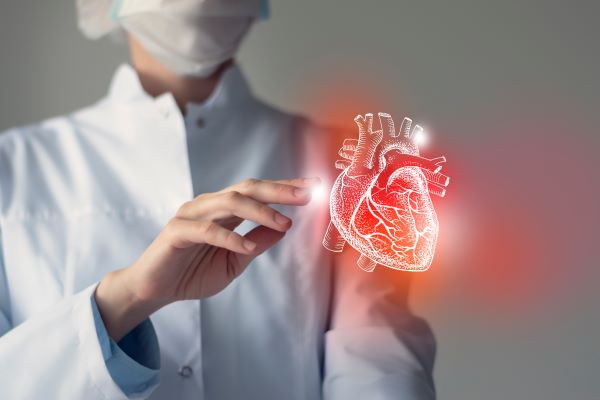A Heart in a Box: The Gift of Life
A “heart in a box”. It sounds like an ad for Valentine’s Day chocolates. But this box contains an actual human heart which is pumping outside its original body, enabling the gift of life from one person to another.
The box is the brainchild of Professor Peter Macdonald, Conjoint Professor of Medicine at the University of New South Wales, senior staff Cardiologist in the Cardiopulmonary Transplant Unit at St Vincent’s Hospital, Sydney, and co-head of the Transplantation Research Laboratory at the Victor Chang Cardiac Research Institute, and his team. It was born of necessity – the mother of invention – to address an ongoing shortage of donor hearts.
“There has been a big gap between the number of donor hearts and the number of people who would benefit from a donor heart,” says Professor Macdonald.
“Before the development of the Heart in a Box, we had been limited to transplanting beating hearts acquired from brain-dead patients still on a ventilator. But now some hearts can be revived even if they are retrieved after life support has been withdrawn.”
About 5,000 heart transplants are performed each year around the world. But the Heart in a Box technique is expected to increase that by an extra 1,000 transplants a year by using hearts that were previously considered unsuitable for transplantation via a concept known as DCD (donation after circulatory death).
At this stage, almost a third of transplants at the Heart and Lung Transplant Unit at St Vincent’s Hospital, Sydney, now use the Heart in a Box procedure with DCD cardiac transplantation.
Professor Macdonald’s research is having a major impact both locally and globally and is emblematic of the paradigm shift occurring in organ donation.
“Our game changing research has been backed in part by an investigative grant from NSW Health and NHMRC funding. This has been pivotal in driving further improvements in DCD transplantation around the world,” says Professor Macdonald.

What’s in the Box?
DCD involves patients who have suffered a catastrophic brain injury or stroke but still have residual brain function. Even though they will certainly die, legally life support must be withdrawn after circulatory or whole of body death has occurred.
However, when circulation stops, the heart becomes engorged with blood very quickly and goes into what Professor Macdonald describes as a “global heart attack” which can severely damage the heart muscle.
“So, we need to resuscitate these hearts prior to transplantation and prevent ischemia – a lack of oxygen and blood supply which leads to muscle death. This is where the box comes in,” he says.
Once declared legally dead, the DCD donor is rushed to the operating theatre. Retrieval surgeons have a window of about 15 to 20 minutes to get the heart, infused with blood taken from the donor, into the box – a portable device – where it is attached to a special circuit to keep it warm and oxygenated, and start it pumping again. It will be constantly assessed in the box prior to transplant.
The Solution is the Solution
Once in the box, along with donor blood, the precious organ is bathed in a solution of special nutrients developed at the Victor Chang Cardiac Research Institute during the past 12 years.
“This solution is key. It contains erythropoietin, a performance enhancing drug, which carries oxygen in the blood to vital organs more efficiently; nitro-glycerine, the active ingredient in dynamite, but which has also been used for over a century in cardiac medicine as a potent dilator of the vascular system to treat conditions such as angina and chronic heart failure. And we are currently trialing a new ingredient of a peptide in funnel web spider venom to add to the mix to preserve the heart muscle further.
“They have to be useful for something other than biting unsuspecting gardeners,” says Professor Macdonald.
Everything old is new again
Despite the recent innovations allowing DCD organs to be used, the concept is not totally new. Christiaan Barnard, the surgeon who performed the first heart transplant in 1967, waited for the donor heart to stop beating. But that pioneering transplant was not successful, because the surgeons were governed by the prevailing medico-legal paradigm of whole of body death.
“Then, in 1968 everything changed for organ transplantation when the concept of brain death became legally and ethically recognised. It has meant that the bulk of today’s cardiac transplants are those performed where the donor hearts are still beating prior to being removed. Because they are taken before circulation has stopped, they are not as prone to damage if transplanted relatively quickly,” says Professor Macdonald.
But Barnard’s initial failure was not in vain. That transplant was the spearhead for what has become an almost routine occurrence. And now DCD organ use, once considered obsolete, is affording more people the gift of a lengthier life.
Updated 2 years ago